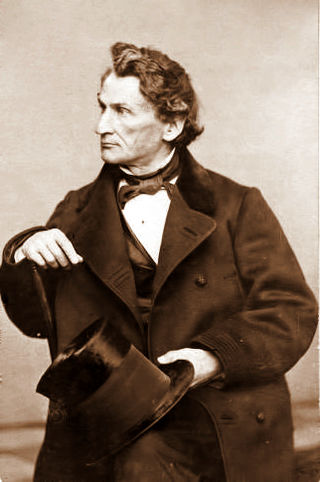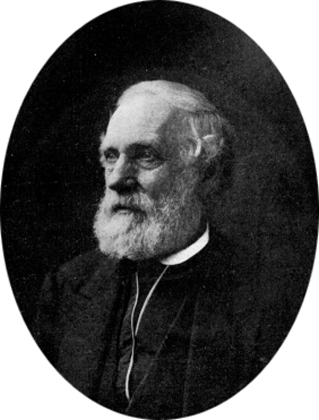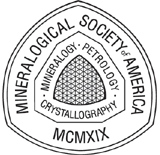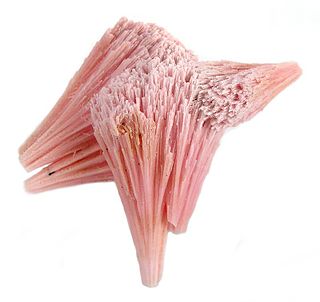
Mineralogy is a subject of geology specializing in the scientific study of the chemistry, crystal structure, and physical properties of minerals and mineralized artifacts. Specific studies within mineralogy include the processes of mineral origin and formation, classification of minerals, their geographical distribution, as well as their utilization.

James Dwight DanaFRS FRSE was an American geologist, mineralogist, volcanologist, and zoologist. He made pioneering studies of mountain-building, volcanic activity, and the origin and structure of continents and oceans around the world.

Titian Ramsay Peale was an American artist, naturalist, and explorer from Philadelphia, Pennsylvania. He was a scientific illustrator whose paintings and drawings of wildlife are known for their beauty and accuracy.

The American Geophysical Union (AGU) is a 501(c)(3) nonprofit organization of Earth, atmospheric, ocean, hydrologic, space, and planetary scientists and enthusiasts that according to their website includes 130,000 people. AGU's activities are focused on the organization and dissemination of scientific information in the interdisciplinary and international fields within the Earth and space sciences. The geophysical sciences involve four fundamental areas: atmospheric and ocean sciences; solid-Earth sciences; hydrologic sciences; and space sciences. The organization's headquarters is located on Florida Avenue in Washington, D.C.

John Farey Sr. was an English geologist and writer best known for Farey sequence, a mathematical construct that is named after him.

The Historical Society of Washington, D.C., also called the DC History Center, is an educational foundation dedicated to preserving and displaying the history of Washington, D.C. The society provides lectures, exhibits, classes, and community events. It runs a museum, library, and publishes the journal Washington History. It had been named The Columbia Historical Society from its founding in 1894 until 1988.

Mindat.org is a non-commercial interactive online database covering minerals around the world. Originally created by Jolyon Ralph as a private project in 1993, it was launched as a community-editable website in October 2000. As of 2023 it is operated by the Hudson Institute of Mineralogy.

The Mineralogical Society of America (MSA) is a scientific membership organization. MSA was founded in 1919 for the advancement of mineralogy, crystallography, geochemistry, and petrology, and promotion of their uses in other sciences, industry, and the arts. It encourages fundamental research about natural materials; supports the teaching of mineralogical concepts and procedures to students of mineralogy and related arts and sciences; and attempts to raise the scientific literacy of society with respect to issues involving mineralogy. The Society encourages the general preservation of mineral collections, displays, mineral localities, type minerals and scientific data. MSA represents the United States with regard to the science of mineralogy in any international context. The Society was incorporated in 1937 and approved as a nonprofit organization in 1959.

George Frederick Kunz was an American mineralogist and mineral collector.

William Phipps Blake was an American geologist, mining consultant, and educator. Among his best known contributions include being the first college trained chemist to work full-time for a United States chemical manufacturer (1850), and serving as a geologist with the Pacific Railroad Survey of the Far West (1853–1856), where he observed and detailed a theory on erosion by wind-blown sand on the geologic formations of southern California, one of his many scientific contributions. He started several western mining enterprises that were premature, including a mining magazine in the 1850s and the first school of mines in the Far West in 1864.

Kutnohorite is a rare calcium manganese carbonate mineral with magnesium and iron that is a member of the dolomite group. It forms a series with dolomite, and with ankerite. The end member formula is CaMn2+(CO3)2, but Mg2+ and Fe2+ commonly substitute for Mn2+, with the manganese content varying from 38% to 84%, so the formula Ca(Mn2+,Mg,Fe2+)(CO3)2 better represents the species. It was named by Professor Bukowsky in 1901 after the type locality of Kutná Hora, Bohemia, in the Czech Republic. It was originally spelt "kutnahorite" but "kutnohorite" is the current IMA-approved spelling.

Mineral collecting is the hobby of systematically collecting, identifying and displaying mineral specimens. Mineral collecting can also be a part of the profession of mineralogy and allied geologic specialties. Individual collectors often specialize in certain areas, for example collecting samples of several varieties of the mineral calcite from locations spread throughout a region or the world, or of minerals found in pegmatites.

Zemannite is a very rare oxide mineral with the chemical formula Mg0.5ZnFe3+[TeO3]3·4.5H2O. It crystallizes in the hexagonal crystal system and forms small prismatic brown crystals. Because of the rarity and small crystal size, zemannite has no applications and serves as a collector's item.

Robert Miller Hazen is an American mineralogist and astrobiologist. He is a research scientist at the Carnegie Institution of Washington's Geophysical Laboratory and Clarence Robinson Professor of Earth Science at George Mason University, in the United States. Hazen is the Executive Director of the Deep Carbon Observatory.
William Martin was an English naturalist and palaeontologist who proposed that science should use fossils as evidence to support the study of natural history. Martin published the first colour pictures of fossils and the first scientific study of fossils in English.
John Sinkankas was a Navy officer and aviator, gemologist, gem carver and gem faceter, author of many books and articles on minerals and gemstones, and a bookseller and bibliographer of rare books.
The Mineralogical Society of Great Britain and Ireland was founded in 1876. Its main purpose is to disseminate scientific knowledge of the Mineral Sciences (mineralogy) as it may be applied to the fields of crystallography, geochemistry, petrology, environmental science and economic geology. In support of this vision, the society publishes scientific journals, books and monographs. It also organizes and sponsors scientific meetings, and the society connects with other societies which have similar scientific interests. Some of these other societies are the International Mineralogical Association, the European Mineralogical Union, the Mineralogical Society of America, the Mineralogical Association of Canada, the Geological Society of London, IOM3, the North of England Institute of Mining and Mechanical Engineers and the Microbiology Society.

Köttigite is a rare hydrated zinc arsenate which was discovered in 1849 and named by James Dwight Dana in 1850 in honour of Otto Friedrich Köttig (1824–1892), a German chemist from Schneeberg, Saxony, who made the first chemical analysis of the mineral. It has the formula Zn3(AsO4)2·8H2O and it is a dimorph of metaköttigite, which means that the two minerals have the same formula, but a different structure: köttigite is monoclinic and metaköttigite is triclinic. There are several minerals with similar formulae but with other cations in place of the zinc. Iron forms parasymplesite Fe2+3(AsO4)2·8H2O; cobalt forms the distinctively coloured pinkish purple mineral erythrite Co3(AsO4)2·8H2O and nickel forms annabergite Ni3(AsO4)2·8H2O. Köttigite forms series with all three of these minerals and they are all members of the vivianite group.

William Walter Jefferis was an American mineralogist and curator of the William S. Vaux Collection of minerals and artifacts at the Philadelphia Academy of Natural Sciences from 1883 to 1898. He personally collected and cataloged 35,000 mineral specimens, which he sold to the Carnegie Museum of Natural History in 1905.
















